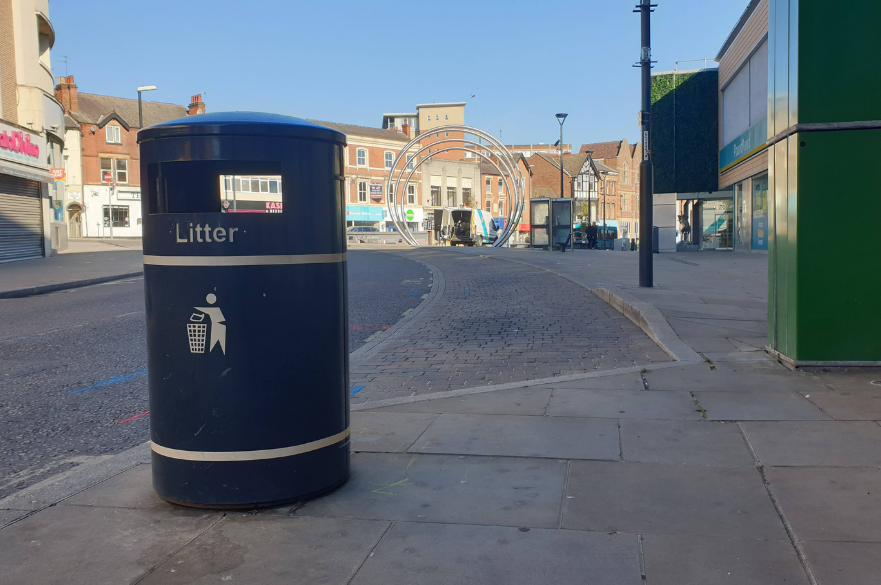Council to roll out waste management technology after successful trial
Published: 27 June 2023

Litter bins will have sensors to tell teams if they're full or not
Derby City Council’s street cleansing and grounds maintenance teams are rolling out new litter bin sensor technology, following a successful trial.
The technology, provided by REEN uses predictive ‘fill-level’ sensor technology that accurately monitors how fast a bin is filling up and provides an alert when the bin needs emptying.
The technology will now be deployed in litter bins across parks, streets and open spaces to reduce overflowing litter bins and manage bin collections more efficiently and effectively.
Revitilising operations
Prior to the technology trial, every litter bin was emptied as part of a scheduled routine area cleanse, which varies across the city and is determined by the rate at which the area falls below a required standard of cleanliness. Outside of this routine cleansing, the bins were emptied based on team knowledge or recurring complaints. This was a manual, paper schedule based operation, where operatives would work from bin one, to bin two, to three, until they reached the end and started again.
This created a problem, as until they arrived at each of the bins, operatives had no way of knowing if the bin was full, overflowing, or only half full.
The predictive ‘fill-level’ sensor technology was initially trialed in 200 litter bins on Derby’s streets. The bins that were part of the trial were in areas where the routine cleansing was once every few weeks, so they relied on an enhanced collection.
Reducing bin visits by 53%
The trial reduced the number of overflowing bin complaints and transformed the collection rounds' efficiency. The technology has allowed for routes to be fully optimised, detailing the order each bin should be emptied and the route the operatives should take from site to site. This route optimisation has cut out unnecessary trips and has had a positive environmental impact, reducing the Local Authority’s carbon footprint.
Collection rounds during the trial saw some bins being emptied more frequently than before the sensors were installed – reducing the number of overflowing bins within the local community. Some bins were emptied less frequently than before during the trial, suggesting that prior to a sensor being installed, teams were emptying these bins before they had reached full capacity. By cutting out these unnecessary trips and emptying bins only when they were needed, the Council reduced the number of visits to bins by 53%.
This new way of working has improved operations and freed up capacity to carry out other work. Derby City Council anticipates that as the technology is expanded further, the same team will be able to maintain additional sensor bins, doing ‘more with the same’ and increasing the efficiency of the service further.
Sam Kelly, Service Manager at Derby City Council said:
“This digital solution has enabled a smarter, leaner way of working. The future capabilities of the technology include the ability for us to make more data led decisions – such as knowing if an area requires an additional bin or a double capacity bin to reduce littering.
"For example, when additional bin requests are received, a temporary sensor bin can be utilised to assess the fill level and determine if a bin is actually required. This also allows a review of the current ‘binfrastructure’ as the system can be used to see if any bins are not being used. This will help to inform where bins can be removed or relocated, so communities have ‘the right bin in the right place’.”